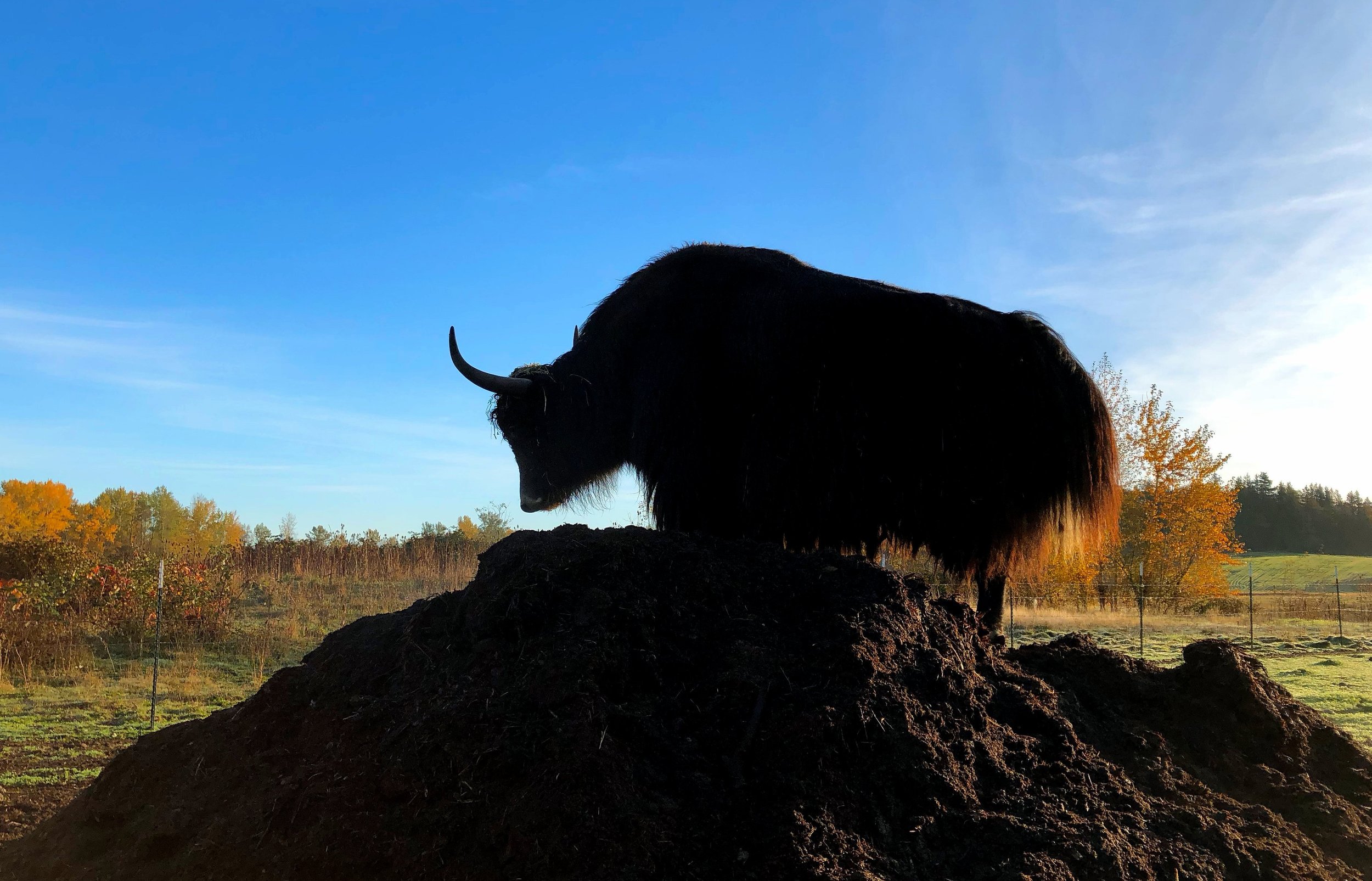A Yak in My Classroom
By Sandra Mathison, DVM
Any time you decide to raise a species that is new to you, do your research and be prepared for a learning curve. This series of articles is about my journey into the “high peaks” and “low valleys” of raising yak. There are estimated to be over 10,000 yaks in the US, and we are still learning about them. I use the yaks for meat, sometimes fiber, and for education. I hope to train a couple for packing and riding. They are part of my classroom on the farm.
Part 1 - How I became a Yak Whisperer
As a lifelong beef producer, people often ask me how I got into Yaks. “By accident!”, I say.
It began with an innocent search for an item on Craigslist. As I scrolled through, I came across an ad about Yaks for sale. It surprised me since I didn’t think there were many Yaks in the US, let alone in my own county. At that time there was only text on the ad. To see the photos, one had to click on the ad. I sighed and decided to continue with my search instead.
A couple of days later, I saw the ad again. This time I clicked on it. The first photo that came up was that of a Yak bull named Rogue. He was so magnificent; it took my breath away! I viewed the rest of the photos. The other yaks were just as beautiful. I groaned and moved on, assuring myself that I did not need any Yaks.
Two days later, I came back to the ad. Out of curiosity, I called the phone number. I was greeted on the other end of the line by a nice lady. She was a wealth of knowledge and invited me to come visit. I said to myself, “No I shouldn’t.” But I did and about three months later became the proud owner of three yaks. She and I went on to become the best of friends. I acquired more animals over time and limited the herd to between 30-40 head.
Yaks are fascinating creatures. They are Bos Grunniens, the same genus as beef cattle but a different species (Bos Taurus). Yak are like having a cow, horse, goat, sheep, bison, and a poodle all in one animal. When they run, they throw their horse tails over their backs. They love to jump and climb like goats. They have fine wool like sheep as well as hair like in beef cattle – albeit longer. They have a hump like bison and the babies look like poodle dogs when they are born.
The meat is similar to beef, mild in flavor, lean, and tasty. It is difficult to keep up with the demand. Yaks milk is rich and creamy. However, my quality-of-life dictates that I do not run a yak dairy. I mentioned that they have wonderful soft fiber. The yaks may be combed in the spring and not sheared. If not combed, the wool simply sheds off. I find sheep’s wool terribly scratchy and can’t wear it, but I can wear the incredibly soft yak wool.
The yaks are fascinating creatures. They are smart, playful, majestic, and often protective of their newborns. Since they have been in the US for only a century, there is so much we don’t know about them. In Part 2, I will share about my learning curve and the realities of owning yak.
Sandra Mathison, a Doctor of Veterinary Medicine, is a lifelong farmer, educator, filmmaker, author, speaker, and retired veterinarian. She lives and ranches in Bellingham, Washington, where she runs a cow/calf operation and grass-fed beef and Yak business.

